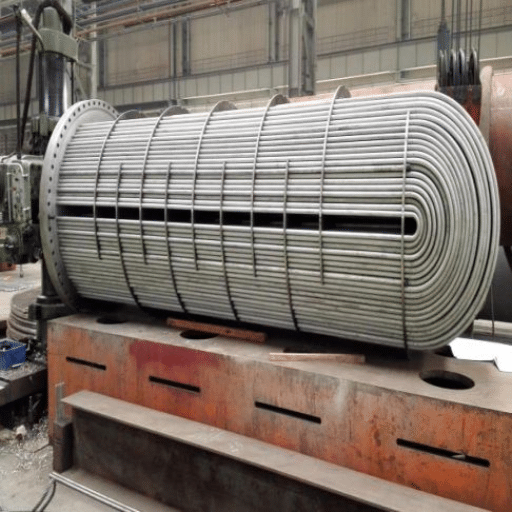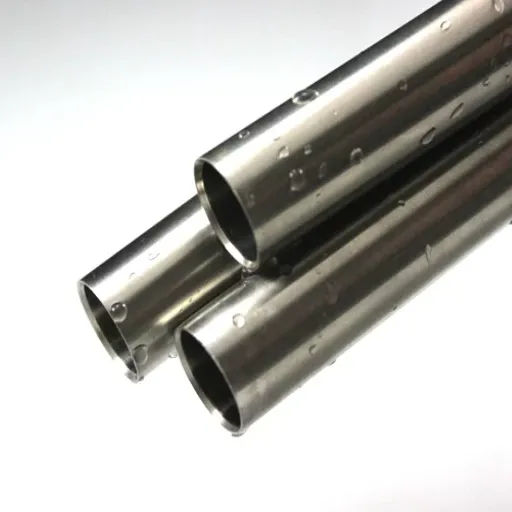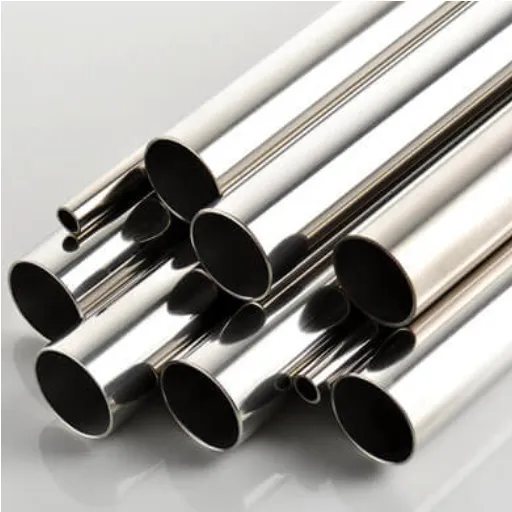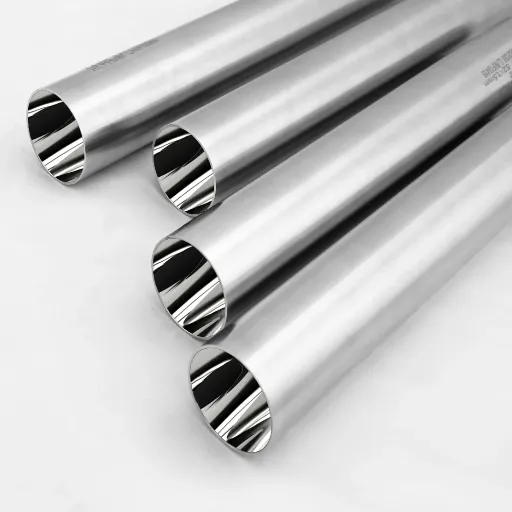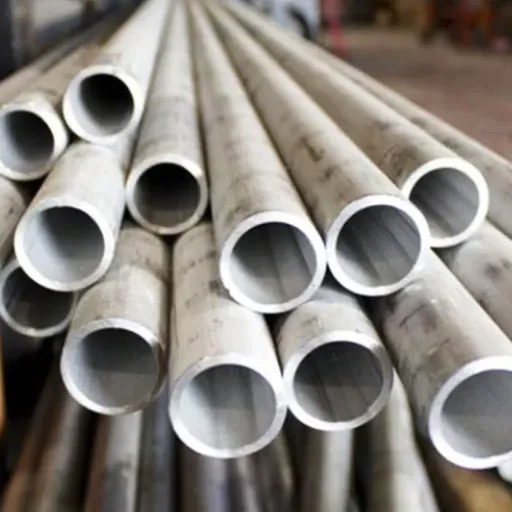Bright annealing or bright heat treating implies any heat treating that protects the surface finish from oxidation, discoloration, or rust. The effect is to produce a finish that is bright and reflective. A bright annealing atmosphere is generally nonoxidizing, usually consisting of a mixture of inert gases such as hydrogen or hydrogen in nitrogen.
Bright annealing improves the corrosion resistance of the metals, increase ductility, and relieve internal stresses in the material. These qualities have made the process essential for aerospace, automotive, and food processing industries where applications demand metals of the highest performance and absolute surface quality. This process keeps the metal structurally sound and greatly increases its life, hence being commonly used in many applications.
What is Bright Annealing?
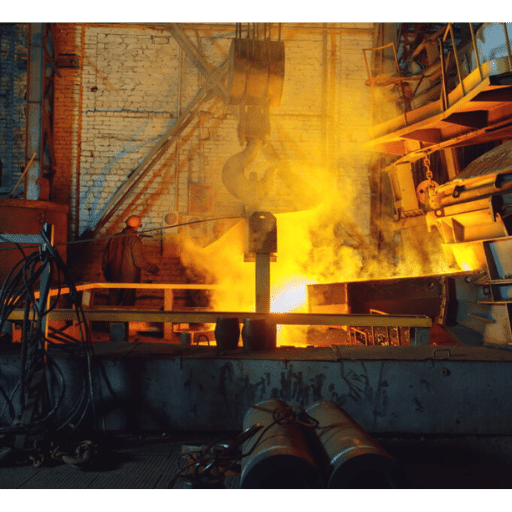
Bright annealing is one of the heat treatments conducted in a controlled atmosphere to improve the metal properties. It is mainly to impart corrosion resistance to the materials, impart ductility, and relieve internal stresses. The bright annealing process involves the heating of the metal to a particular temperature, followed by cooling in an atmosphere of inert or reducing gas, such as hydrogen or nitrogen, to prevent surface oxidation. This produces a clean and smooth and a good reflective metal surface suitable for application requiring a high surface finish in medical and aerospace sectors.
Definition of Bright Annealing
Bright annealing is a heat treatment treatment mainly used to improve the physical and surface properties of metals such as stainless steel, nickel alloys, and other corrosion-resistant types of metals. As per the most recent information, it would seem this method also is effective in avoiding surface oxidation while simultaneously restoring mechanical properties to the metal, including ductility and toughness-given that they might have been diminished-the processing pertaining to fabrication or prior methods. The surface cleaning and reflection qualities of a metal greatly depend upon the atmosphere under which the metal has been heated. With such attention to detail, industries-that is pharmaceutical equipment, food processing machinery, and aerospace-components requiring an excellent finish are serviced by bright annealing. Thus it stands to reason that bright annealing is important in current-day engineering and manufacturing industries.
Comparison with Ordinary Annealing
Ordinary Annealing
- Takes place in open air or uncontrolled atmosphere
- Allows oxidation and scaling on metal surface
- Results in dull or tarnished finish
- May require further cleaning or surface treatment
Bright Annealing
- Conducted in carefully controlled atmosphere
- Typically vacuum or inert gas like hydrogen
- Prevents oxygen contact with metal
- Yields bright, smooth, reflecting finish
According to current facts, industries increasingly favor bright annealing over ordinary annealing because of the increased demand for super-fine components with the highest aesthetic and functional qualities. The controlled atmosphere used in the bright annealing process does away with post-treatment cleaning, thus saving time and resources, while enabling manufacturers to comply with strict environmental and regulatory standards.
Applications of Bright Annealing
Pharmaceutical and Food Processing Equipment
Bright annealing is essential when producing stainless steel tanks, pipes, and fittings to be used in pharmaceutical and food industries. It provides a smooth, contaminant-proof surface, thus helping prevent bacterial growth.
Aerospace Components
Aerospace components demand materials with superior strength and durability. Bright annealing enhances the corrosion resistance and surface finish of stainless steel and nickel-based alloys that aerospace components are made of so they can be safe and perform under strenuous conditions.
Chemical Processing Plant Equipment
In chemical plants, pipes, reactors, and heat exchangers must withstand harsh chemicals. Bright-annealed metals provide adequate corrosion resistance while extending the life cycle of the equipment and keeping it functional.
Medical Instruments and Devices
Medical instruments and implants are expected to exhibit precision and hygiene. Surgical and diagnostic instruments obtained through the bright annealing of stainless steel will offer a surface for box non-porous, smooth to sterilize.
Household Appliances
The manufacture of household appliances finds application of bright annealed metals with purpose cooktops, utensils, kitchen sinks where value is placed on aesthetics and corrosion resistance.
The Bright Annealing Process
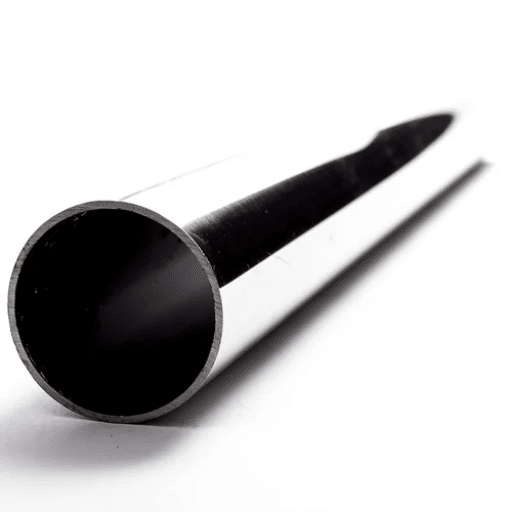
Bright annealing acts as a heat treatment in order to improve qualities such as durability, corrosion resistance, and price for items made out of metals like stainless steels. In this process, the metallic material thermalizes within a controlled atmosphere, mainly formed by hydrogen or sometimes from inert gases, to avoid any oxidizing atmosphere. After heating, the metal cools quickly to preserve that smooth finish, evident in the “bright” finish characteristic.
From the recent information, bright annealing across all industries is one of the most sought-after processes in imparting non-porous sterilizable surfaces for medical instruments and providing aesthetically pleasing finishes for household items. The process essentially strengthens the material so that it attains the quality requirements for which it is intended in various applications. Being stronger with advanced technologies and machines, bright annealing has become quite well-defined in an industrial process.
Overview of the Annealing Process
The annealing process pertains to a heat treatment method to improve the physical and chemical properties of a material. This process involves heating an object, metal, or glass to a certain temperature and maintaining this temperature for some time while allowing it to cool gradually. Such heating and cooling processes cause changes in the microstructure of the material, which removes internal stresses, improves ductility, and adjusts to predefined mechanical or physical properties.
Bright annealing, therefore, is specifically an annealing process performed under a controlled inert atmosphere to prevent oxidation of the surface and preserve its polished and brilliant finish. These requirements are especially relevant for the manufacture of medical instruments, cleanability, and corrosion resistance. Newer technologies, as evidenced by innovations featured prominently in Google’s search trends, have provided strong impetus toward the automation and precision of annealing processes. Great emphasis has been laid upon designing new furnaces and monitoring annealing in real time to ensure energy-efficient operation and consistent outputs, coupled with the highest standards of process quality across different industries.
Steps Involved in Bright Annealing
Factors Affecting the Bright Annealing Process
Material Composition
The chemical makeup of an alloy or metal generally controls its ability to respond after annealing. For example, stainless steel grades with chromium and nickel need to be annealed within proper temperature limits to avoid oxidation and to retain attractive surface finishes.
Annealing Atmosphere
In the process, the protective environment is one of the paramount considerations. Typically, inert gases such as nitrogen or hydrogen are used. Any atmosphere impurities, for example, oxygen or moisture, might cause discoloration or spur unwanted oxidation.
Temperature Control
Correct annnealing temperature must be maintained. Temperatures greater than normal would encourage grain growth and distortion of the material, whereas improper temperature would not endow material with proper expected properties.
Heating and Cooling Rate
The rates of heating and cooling have some effect on the results. The slow and controlled heating and cooling are essential to ensure materials do not develop thermal stresses and to obtain uniformity in their microstructure.
Surface Finish Before Processing
The surface finish of the materials at the time of loading greatly affects the end appearance. Any contamination or scale on the surface has to be cleaned off prior to annealing for grading an immaculate finish.
Equipment and Furnace Design
Furnaces rated for better control of temperature and atmosphere strengthen the process reliability. Poorly maintained equipment can create inconsistencies or compromise quality.
Types of Annealing Furnaces

Vacuum Furnaces for Bright Annealing
Oxidation and subsequent discoloration are what furnaces or other treatment-aniline processes counter. Bright annealing stands for heating metals in a controlled atmosphere without oxygen, ensuring the metal does not tarnish and retain some reflective finish. Finer vacuum furnaces for this purpose come with fine temperature control and a high-purity atmosphere of hydrogen or inert gas to ensure the material remains uncompromised. Depending upon their viewing characteristics, such furnaces are usually employed in good stainless steel, nickel alloys, and other high-performance materials. Newly developed systems highlight better energy efficiency and more automation in vacuum furnaces, hence gaining increasing favor for use in industries.
Gas-Fired Industrial Furnaces
With efficiency and versatility being their main features, industrial gas furnaces enjoy wide usage in many industries. These furnaces burn natural gas or other fuel gases to heat, which is then channelized for industrial works-mainly melting metal, making glass, or heat treatment application. With operational costs kept low and the thermal efficiency high, these furnaces enjoy many benefits. Newer furnace designs employ advanced control systems to reduce the energy consumption in addition to reducing emissions, hence tying well with global sustainability waves. Gas-fired furnaces are now geared towards integrating IoT (Internet of Things) technologies to ensure the performance optimization and maintain a steady output quality because of the advent of smart manufacturing. Hence, gas-fired furnaces, being very adaptable, find industrial application in automotive, aerospace, and construction industries.
Comparison of Different Furnace Types
In a furnace comparison, one should consider efficiency, cost, and environmental footprint. Gas-fired furnaces continue being preferential within industries for their flexibility, energy efficiency, and integration with IoT technologies to optimize performance. Electric furnaces, instead, are increasingly becoming the choice, especially for industries that want to reduce carbon emissions. Electric furnaces convert electricity into heat with great efficiency and do not emit greenhouse gases directly, and so are a greener alternative. The downside may be the higher operating costs as grid electricity prices are on the rise in many places.
Induction furnaces allow for very fine temperature control and quick heating. They are used in applications that require high-quality metalworks such as steelmaking or cast iron manufacture. Oil furnaces stand, although now uncommon, wherever no natural gas infrastructure is present. They are often local equipment known for expensive operation and for producing more emissions than the other types.
Ultimately, choosing the type of furnace will rest on the special industry application, energy objectives, and regional rules. As technology advances, each type of furnace is thereby being improved to consume less energy and produce lesser emissions, in congruence with final global sustainability goals.
Advantages of Bright Annealing
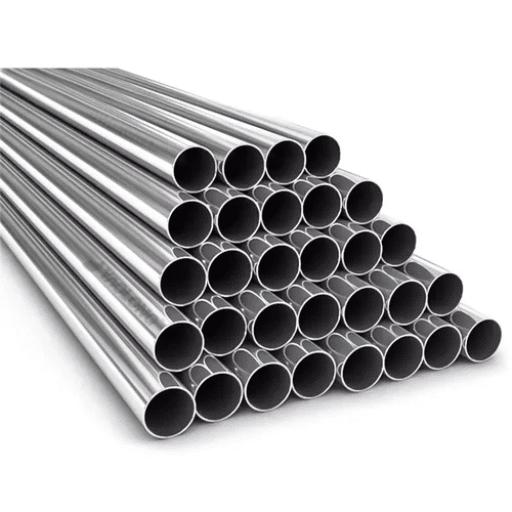
Enhanced Corrosion Resistance
Using the latest advancements in material sciences and novel technologies, the enhanced corrosion resistance is really important for prolonging the lifespan of equipment and structures exposed to harsh environments. Recent findings state that surface treatments, such as coating and alloying, suffer minimal degradation due to oxidation or corrosion inside chemical reactions. According to the recent updates on Google’s search engine data, industries such as aerospace, marine, and chemical processing are increasingly using such techniques to combat corrosion. Innovative techniques not only improve operational efficiency and maintenance but also cut costs and reduce downtime. Hence, this proves to be an invaluable technique across all sectors.
Improved Mechanical Properties
Combining the latest insights of Google’s search engine data, it comes forth that better engineering techniques can actually improve the mechanical properties of materials. These are more so working on the enhancement of the very principle of resistance, which stands size against surface hardening, heat treatments, and composite materials. They establish the worthy demand for materials that can fare through high-stress environments while keeping their structural integrity. For instance, these improvements are exploited by the aerospace and automotive industries to engineer parts that are lightweight yet strong. This implies that innovation very much comes into being at the forefront of finding solutions to modern industrial challenges.
Nitrogen in Bright Annealing

The nitrogen gas holds important significance for bright annealing, especially in put-drying an atmosphere that prevents metal oxidation during heat treatment. According to the last search by Google engines, nitrogen is used as the inert gas in this procedure because of its non-reactive properties at high temperatures. Either excluding oxygen or any other gas could facilitate stoppage for staining from reacting and oxygenating to those metals. Nitrogen control atmosphere industries would, therefore, bring out the finest qualities of stainless steel and other metals in durability and appearance.
Role of Nitrogen in the Process
Nitrogen, as corroborated by the latest data from Google Search Engine, plays a very significant role in providing the optimum environment for a heat treatment process. Basically, it maintains an inert atmosphere while preventing the oxidation and decarburization of the metals, thus retaining the surface integrity and basically the structural properties of the metals. This treatment is crucial in the case of stainless steel and alloys, which would otherwise lose their corrosion resistance, appearance, and mechanical strength. By maintaining the nitrogen atmosphere in a very precise manner, manufacturers can ensure final products with very consistent results, ultimately yielding better quality and performance of the materials treated. These developments also affirm the necessity of the nitrogen atmosphere in current metallurgical applications.
Benefits of Using Nitrogen
According to recent data, industries utilizing nitrogen atmospheres have reported higher productivity and reduced material wastage, confirming its pivotal role in streamlining metallurgical processes. This highlights nitrogen’s importance in producing high-quality, reliable materials for critical applications across various sectors.
Challenges and Considerations
Key Challenges
While nitrogen atmospheres do give several advantages to the metallurgical processes, many challenges and considerations must be addressed to conclusively realize their optimum performance. Gas purity and flow rates constitute one major challenge: any fluctuation can adversely affect material quality. Another concern is that, generally, the technology requires a sizable upfront investment so that companies cannot afford the special equipment and infrastructure essential for nitrogen usage. The latest observations make clear how Google searches reflecting interests in cheap generation solutions and sustainable aspects of nitrogen manufacture confirm the rising cry of the industry for nitrogen methods that are easier on the environment. Economics against technical benefits is where the issues remain and will pave the path to be tread in applying nitrogen atmospheres more widely in the industry.
References
-
Optimizing the Conveyor Belt Speed of a Bright Annealing Furnace
A publication from Amrita University discussing operational improvements in bright annealing furnaces.
Visit the site -
Bright Annealing Conditions – Oak Ridge National Laboratory
A report from the UNT Digital Library detailing controlled bright annealing conditions for oxidation and creep resistance.
Visit the site
Frequently Asked Questions (FAQ)
What is bright annealing, and how does it differ from other types of annealing processes?
Bright annealing is a process of annealing in which metals are heated within a controlled atmosphere. By inert atmosphere, one means a high-purity gas, usually of nitrogen or argon type. The gaseous atmosphere prevents oxidation and decarburization of the metal. Unprotected annealing can expose metals to atmospheric oxygen, hence bright annealing has been practical where pristine, oxide-free surfaces are required, as in austenitic stainless steel or other fine metals.
What metal materials are mostly applied for bright annealing?
Austenitic stainless steel is mostly for bright annealing due to its resistance to corrosion, as well as its properties of strength and ductility. Also, some ferrous and even non-ferrous alloys can be annealed by using bright annealing, especially when these materials require a protective atmosphere during heat treatment, with the greatest concern being the maintenance of any surface quality required.
In relation to the bright annealing process, how is the structure of the metal enhanced?
The process involves heating metals to a designated temperature in a neutral atmosphere. This heat treatment may remove work hardening and residual stresses, allowing the metal to attain a degree of softness that makes it easier to machine. It also refines the grain structure to contribute greatly to the performance of the finished product.
What is the significance of a protective atmosphere in a furnace during bright annealing?
The protective atmosphere within an annealing furnace is important because it keeps oxides from developing on the surface of the metal. A beneficial atmosphere will thus always contain reducing gases like hydrogen and nitrogen in combination with inert gases, or simply inert gases alone, with the goal of not allowing any oxidation on the polished surface during or after annealing.
Can bright annealing be conducted inside vacuum furnaces?
Yes, bright annealing operates well with vacuum furnaces because they prevent oxidation by simply ensuring an oxygen-excluded environment throughout annealing. Vacuum furnaces allow the achievement of certain temperatures needed for effective heat treatment, without fostering contamination of the metal by atmospheric gases.
What is the typical temperature range used during bright annealing?
The temperature selected during a certain bright annealing operation is usually one with which the metal gains the mechanical properties desired without further damage to its mechanical integrity. Temperature, therefore, generally ranges through low to medium values wherein it depends upon what metal is to be annealed and what properties are desired in the final product.
How does bright annealing differ from annealing performed in the open?
Bright annealing is carried out in a controlled ambient, while open air annealing exposes the specimens to atmospheric oxygen and possibly slight moisture which could attack the surface to evolve an oxide layer to adversely affect the properties of the metal. In bright annealing, the environment never allows any oxidation to occur, which leaves the specimens with a clean surface.

